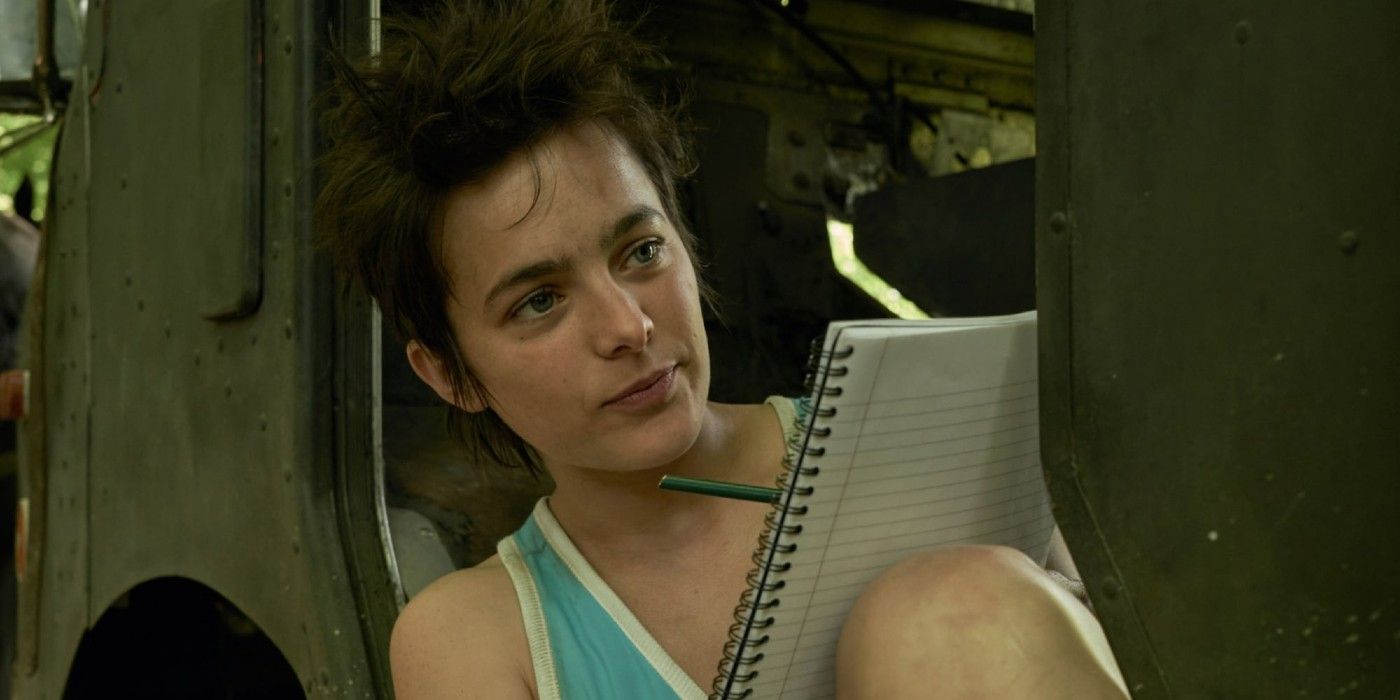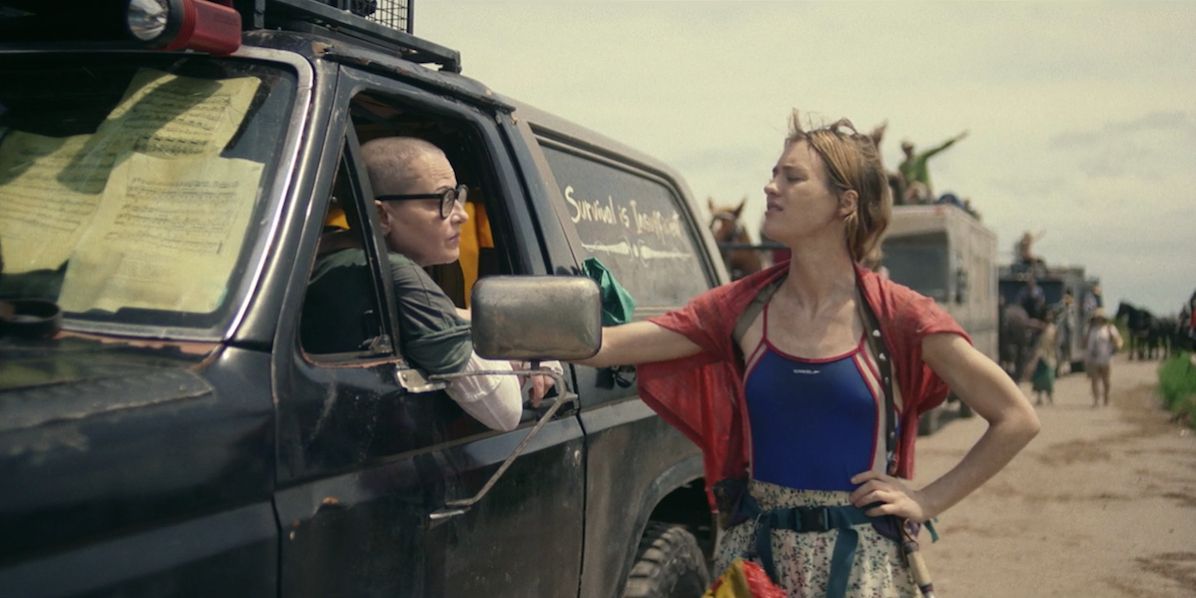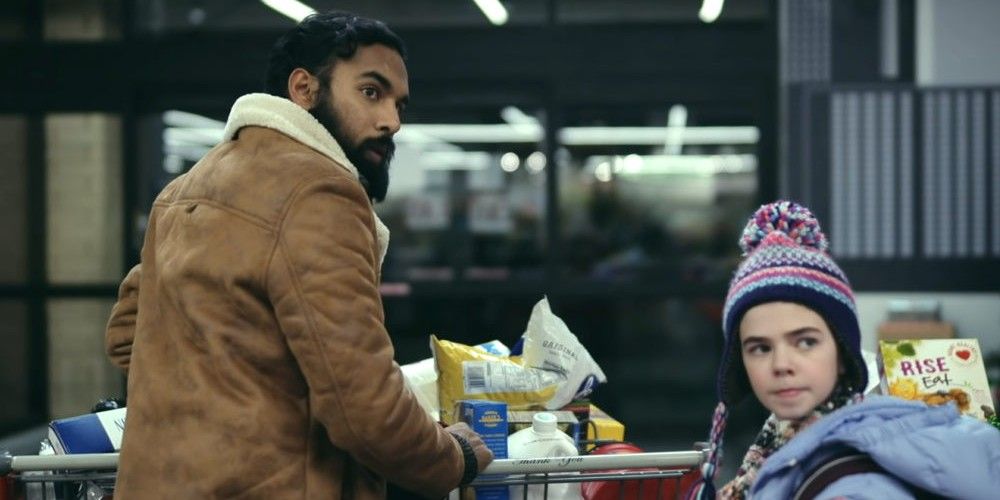WARNING: The following contains major spoilers for Station Eleven, streaming now on HBO Max.
The rights to Emily St. John Mandel's novel, Station Eleven, were sold within a year of its 2014 release, as tends to be the case with award-winning and bestselling books. The difficult-to-classify yet deeply engrossing tale of a global pandemic was ripe for adaptation to a visual medium with its vividly imagined post-apocalyptic landscapes, myriad well-drawn characters and shows within shows. Then, an actual pandemic upended the world, including the entertainment industry and the way people consume content. And against considerable odds (ironically, the project began filming just prior to the onset of COVID-19), HBO Max's Station Eleven turned out far better than most adaptations of celebrated literary work -- so much so, it could serve as a guidepost for future attempts to commit great books to the screen.
The first and best decision that show creator Patrick Somerville and company made was to adapt Station Eleven into a miniseries instead of a movie. The opposite easily could've happened; back in 2015, most novels were being rewritten into films. From more literary fare like The Revenant, The Martian and Room to YA series like The Hunger Games, Divergent and The Maze Runner, once rights were acquired, the movies were usually producers' first instinct. That's still the standard today, but in the latter half of the 2010s, as on-demand streaming became ubiquitous, prestige projects (Sharp Objects, Watchmen, The Underground Railroad, even Bridgerton) started to migrate from theaters to homes. COVID only hastened that trend, and Station Eleven had the dumb luck to premiere as Omicron hit and people were largely choosing to stay home again.
But it's not only HBO Max's accessibility that worked in Station Eleven's favor (if it had been a feature film, it likely would've debuted on the streamer, too), a ten-episode limited series is simply a much more appropriate format for Somerville to tell this story. Station Eleven frequently jumps around between multiple timelines and characters' perspectives. It's purposefully episodic, as there is no single protagonist or plot arc. Instead, St. John Mandel leaves the reader with a collective impression of how the Georgia Flu affected the trajectory of about six main characters' and a dozen supporting characters' lives. In doing so, she makes a broader statement about the fragility of modern society and the persistence of the human spirit.
It takes about the same amount of time to watch the miniseries as it does to read the book, which allows the audience to experience the collapse and rebirth of St. John Mandel's world in the same delirious and deliberate way. It also enables the viewer to get to know the key players to the same extent. There are shades of Lost here, in which episodes focus on one group member's backstory and reveal secrets about that person that not only inform the plot going forward but add depth and texture to what we previously understood about that character. With ten episodes to work with, Somerville and St. John Mandel (who is a producer on the project) don't have to cut much from the already popular text. In short, the limited series format preserves the novel's pace and editing, which are a significant part of its essence.
Most of Station Eleven's more cinematic elements also make the transition from the page to the screen. There's the doomed production of King Lear at the start, the train of grocery carts trekking through the snow, the makeshift Museum of Civilization, the looming threat of cult leader known as the Prophet and, of course, the quaint but dystopian Travelling Symphony itself, not to mention the fictional bespoke graphic novel from which the book gets its name. Those who read and enjoyed Station Eleven will appreciate how lovingly and faithfully all those elements have been interpreted, including the subtle but strong writing, the eerily beautiful cinematography and the across-the-board excellent performances.
However, this adaptation isn't afraid to deviate from the source material when it's either necessary or the more interesting choice. One of the settings has been changed from Toronto to Chicago. The central character, Arthur Leander, has been recast as Mexican instead of Canadian. The way the Prophet -- the piece's ostensible villain -- is radicalized then introduced has been tweaked for narrative effect. But the most notable deviation is more of an addition. Jeevan and Kirsten are two of the novel's most relatable presences, but they barely come into contact with each other. This version thought to pair them up, which both makes the audience care more about them and adds real tension to the question of how their journey together came to an end.
Though St. John Mandel's novel is certainly complete and successful enough not to warrant criticism, the Station Eleven miniseries feels like an even more impactful new draft that's been workshopped by a group of passionate artists. That's fitting, since the story is ultimately about the power of stories as they evolve along with us in our times of greatest need.
To see how Station Eleven builds upon the source material, the series is streaming now on HBO Max.



